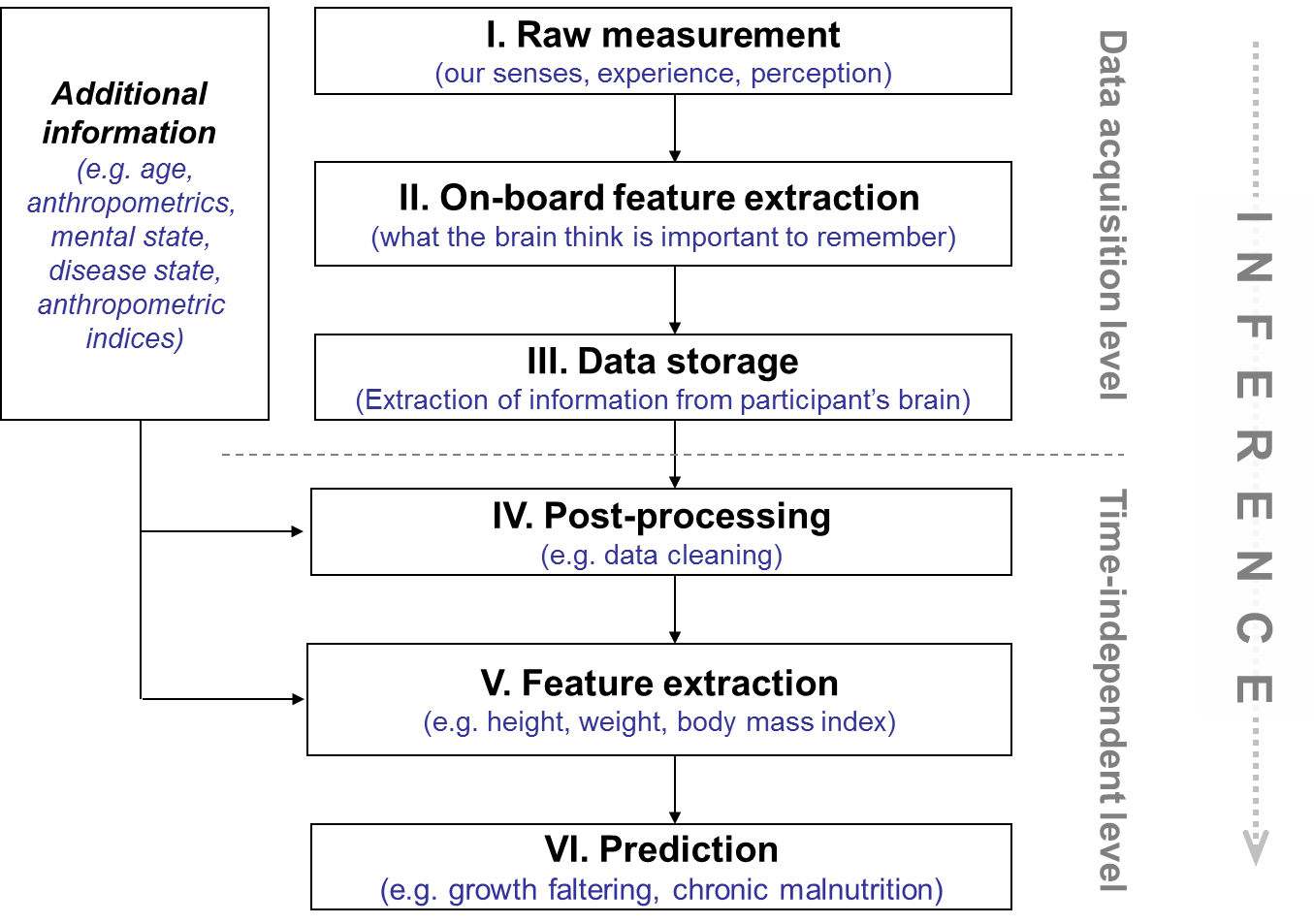- Introduction to Subjective Methods
- Birth weight
- Body shape
- Weight and height
- Waist and hip circumference
- Introduction to Objective Methods
- Simple measures - stature
- Simple measures - weight
- Simple measures - circumference
- Simple measures - arm anthropometry
- Simple measures - skinfolds
- Simple measures - abdominal sagittal diameter
- Simple measures - head circumference
- Bioelectric impedance analysis
- Multi-component models
- Hydrostatic underwater weighing
- Air displacement plethysmography
- Hydrometry
- Whole body DEXA scan
- Near infrared interactance
- Whole body counting of total body potassium
- 3d photonic scan
- Magnetic resonance imaging (MRI) / Magnetic resonance spectroscopy (MRS)
- Total body electrical conductivity (TOBEC)
- Computed tomography (CT)
- Ultrasonography
- Introduction anthropometric indices
- Body mass index
- Fat and fat free mass indices
- Ponderal index
- Percentiles and Z-scores
- Anthropometry Video Resources
- Height procedure
- Protocol for measuring waist circumference
- Measuring hip circumference
- Weight and body composition procedure
Introduction to Subjective Methods
- Subjective methods use responses from a participant to estimate aspects of diet, physical activity and anthropometry
- Information about diet, physical activity and anthropometry derived from the participant’s senses, experiences and perceptions is stored in memory
- The purpose of a subjective method is to extract this data as accurately as possible
- Extracting pertinent information through subjective methods is a very difficult task; at present there is no subjective method suitable for all purposes and populations
Diet, physical activity and anthropometry have multiple complex dimensions and as a result many instruments have been designed for a variety of purposes. Subjective methods rely on the information about these dimensions firstly being stored in the memory and the individual being able or willing to report these details accurately.
Therefore, an important disadvantage of subjective methods is their potential to be influenced by biases such as recall bias and social desirability bias. However, subjective methods generally have the following important advantages:
- Affordability
- Ease of use
- Non-invasive
- Capturing qualitative dimensions of context and type
- Flexible means of implementation (e.g. interview, electronic device, paper/pencil, online)
- Suitability for large studies
It is possible to capture detailed data using subjective methods, but there is typically a trade-off between detail and participant burden.
Subjective methods of anthropometric assessment are typically used for practical reasons. Different aspects of anthropometry are required for different types of study and various tools to measure these are available. Methods can aim to measure current or historical body dimensions.
Subjectively reported data are highly correlated with objectively measured dimensions but still prone to errors, which may vary by:
- Current body size
- Gender
- Age
- Social and cultural factors
For instance, larger individuals tend to over-report height and under-report weight, resulting in an underestimated body mass index. When using subjective methods, careful interpretation of the data needs to be considered, and it is recommended that the validity of subjectively measured data is assessed against objectively measured values in a subsample of the main study. Correction factors can then be developed and applied to the data in the main study. An example of the stages of inference in predicting an anthropometric target variable through subjective measurement is shown in Figure A.2.1.
Subjective methods for anthropometric assessment can be used to measure the following:

Figure A.2.1 Example of stages of inference for a subjective method of anthropometric assessment.
Adapted from: [1].
- Corder K, Ekelund U, Steele RM, Wareham NJ, Brage S. Assessment of physical activity in youth. J Appl Physiol 2008;105(3):977-87.
